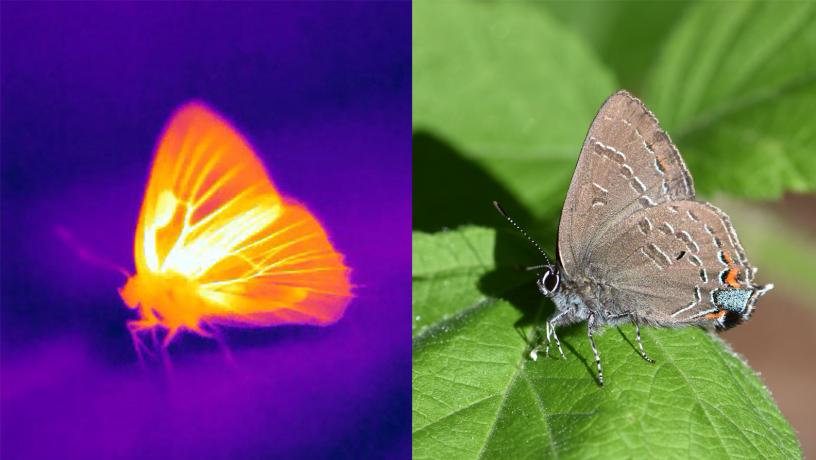
A butterfly’s wings are necessary organs to fly, but until now have been considered just membranes. However, as a result of thorough research on the wings of butterflies, they discovered that the wings of butterflies are a multifunctional organ that has the role of heat sinks, sensors, and pumps that circulate body fluids.
A team of applied physics at Columbia University has carefully separated them from the wings of Vanessa cardui and Lycaenidae and examined their internal structures.
The research team says that a butterfly’s wings are like panels that detect so-called light vectors. It is said that butterflies can accurately detect the intensity and direction of the sun using feathers, even if they do not use sight. They also discovered an organ called the scent pad, which is thought to be related to the production of pheromones, not the sensory organs, or the wing heart, which circulates fluid. Body fluids, including blood cells, flow through the olfactory pads on the wings of male butterflies. There is a feather heart like a pump near the olfactory pad, and it helps circulation of body fluids by beating dozens of times per minute.
The research team’s findings show that the butterfly’s wings need to be redefined as an organ with a dynamic, living structure rather than an inert membrane. In addition, living cells die if they are not under the proper temperature, but the research team thought that the butterfly wings would have a function to control the temperature. So, as a result of investigating the temperature distribution of the butterfly’s wing using an infrared camera, it was confirmed that it radiates heat from the living tissue of the butterfly wing.
There are four types of structures in butterfly wings, and these fine structures contribute to rapid heat dissipation. Thanks to the efficient heat dissipation by this action, the living part of the butterfly’s wing is always kept cooler than the membrane part.
The research team also aimed a laser on the butterfly’s wing and observed it with an infrared camera to see why the butterfly uses its wings to sense the direction of light. When the laser is irradiated, the wings of the butterfly heat up gradually. The butterfly then turns and adjusts its direction so that the wings do not overheat. Also, if the laser hits the wing part with the wing open, the feather closes. It is said that when the wing temperature exceeds 40 degrees, all of the butterflies subject to investigation showed behavior to prevent overheating of the wings. The nanostructures found in butterflies’ wings are said to be inspiring in the design of coolants that emit heat.
The team believes that many of these sensors on butterfly wings enable complex flight patterns through real-time feedback. It is pointed out that it is possible to develop an airplane wing that exhibits high performance under complex aerodynamic conditions to study butterfly wings not only based on flight dynamics, but also designed as an integrated sensory system. Related information can be found here .


















Add comment